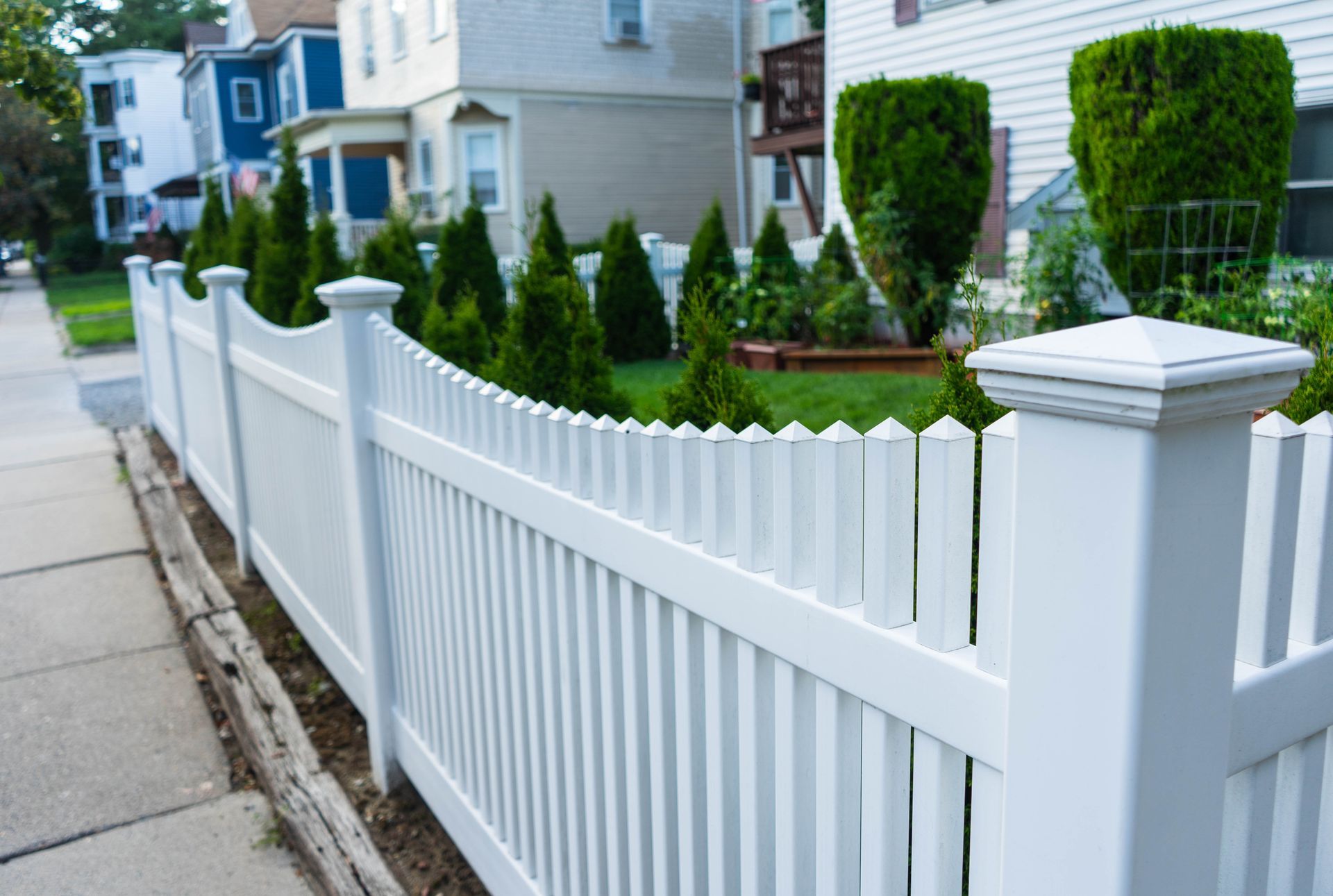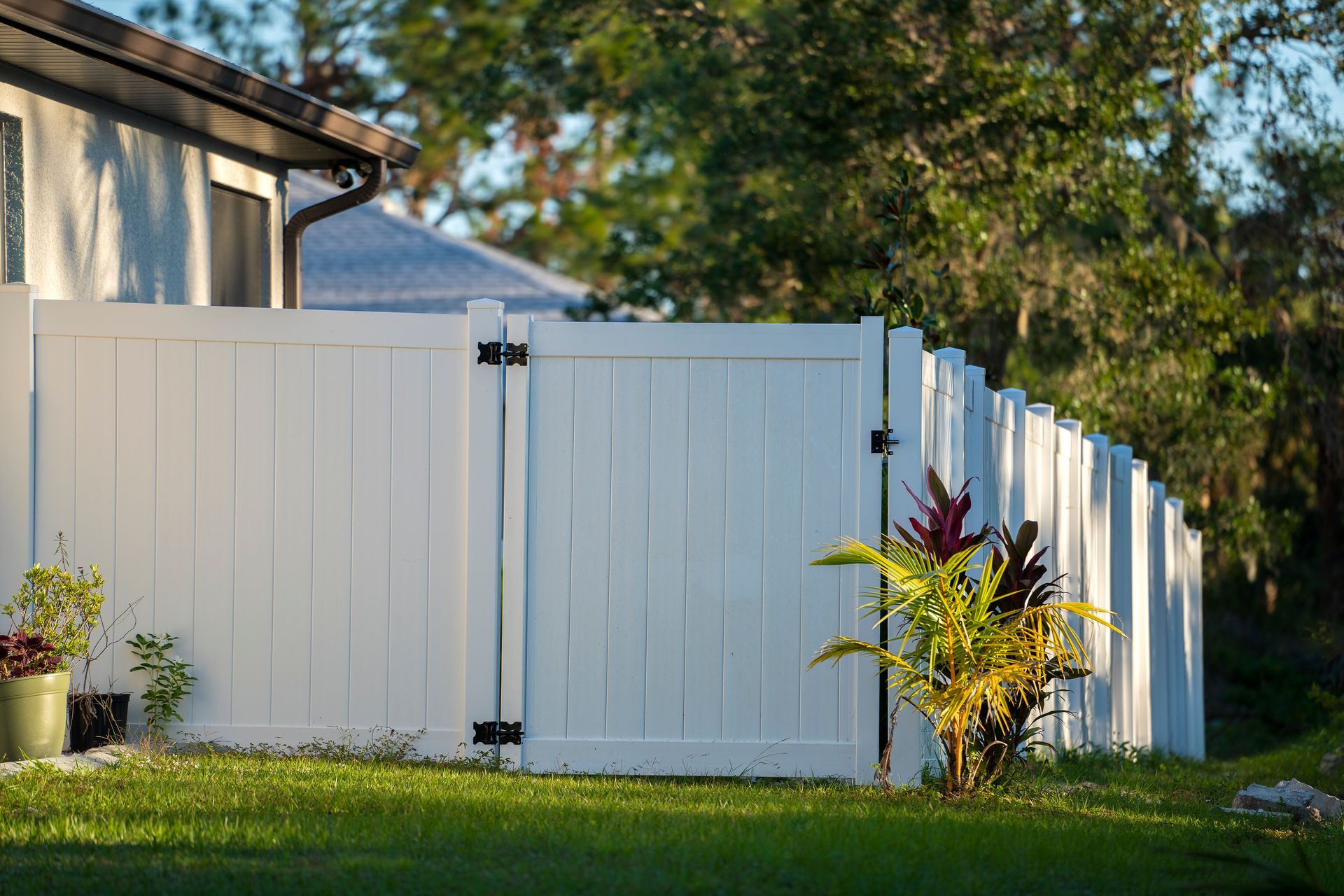Durable Vinyl Fence Installation in Western New York
KKR Fencing & Outdoor Services specializes in professional vinyl fence installation in Delevan and across Western New York. Our family-owned company provides expert installation of beautiful, low-maintenance vinyl fences that enhance privacy, security, and curb appeal for residential and commercial properties alike.
Get your free Delevan vinyl fence estimate today and discover how a premium vinyl fence can elevate your property’s value and beauty.
Why Choose Vinyl Fencing?
- Low Maintenance: Vinyl fences never need painting or staining, resisting fading through harsh Western NY winters.
- Durability: Made from high-quality PVC, vinyl withstands heavy rain, snow, and strong winds without cracking or warping.
- Privacy & Security: Solid panels create quiet, secure spaces that safeguard your property from view and intruders.
- Clean Aesthetics: Consistent color and sleek design provide a polished look complementing any home or business style.
Customer Success Stories
Our satisfied clients in Western NY trust KKR Fencing for their vinyl fencing needs. Lisa T. from Delevan shared this about her experience:
- “Our vinyl fence not only looks stunning but has held up beautifully through every Western New York storm. KKR’s team was professional and efficient.” – Lisa T., Delevan, NY
Explore more testimonials and project photos in our
vinyl fence installation portfolio.
Why Choose KKR for Vinyl Fence Installation?
- Local Family Business: Strong Western NY roots and trusted reputation for integrity and quality.
- Transparent Pricing: Detailed estimates you can count on with no hidden fees.
- Experienced Installers: Skilled teams dedicated to precision craftsmanship and satisfaction.
- Premium Materials: We use vinyl designed for durability in the Western NY climate.
- Superior Customer Support: Guidance through every step, from estimate to maintenance advice.
Our Vinyl Fence Installation Process
- Initial Consultation: Assessing your property and collaboration on fence style, color, and layout.
- Measurement & Planning: Precise dimensions are taken and installation logistics finalized.
- Careful Installation: Posts and panels installed with durable footings to withstand winters and storms.
- Final Review: Walkthrough ensures your satisfaction; we provide tips for maintenance and upkeep.
Ready for a maintenance-free fence?
Get your Delevan vinyl fence quote now.
Service Areas for Vinyl Fence Installation
Serving Delevan, Buffalo, Amherst, West Seneca, East Aurora, and nearby Western New York areas. Confirm your location at our service area pages.
Frequently Asked Questions About Vinyl Fencing
How long does vinyl fence installation take?
Most projects complete within 2 to 5 days depending on fence length and property specifics.
Are vinyl fences durable in cold climates like Western NY?
Yes, our vinyl fences are manufactured to resist cracking, warping, and weather damage.
Is vinyl fencing easy to maintain?
Yes, vinyl requires only occasional cleaning with soap and water to look like new.
Can I customize the color and style of my vinyl fence?
Absolutely, we offer various colors and styles, including realistic wood-grain textures.
Do vinyl fences withstand UV exposure?
Yes, our vinyl fencing is treated to resist UV fading and maintain vibrant color over time.
Are permits required for vinyl fences in Western NY?
Permit requirements vary by municipality; KKR will assist with all codes and permit processes.
Ready to Enhance Your Property with a Vinyl Fence?
Contact KKR Fencing & Outdoor Services today to
schedule your free Delavan vinyl fence installation estimate. We’re excited to provide you with a stunning, durable, and worry-free fence solution.



